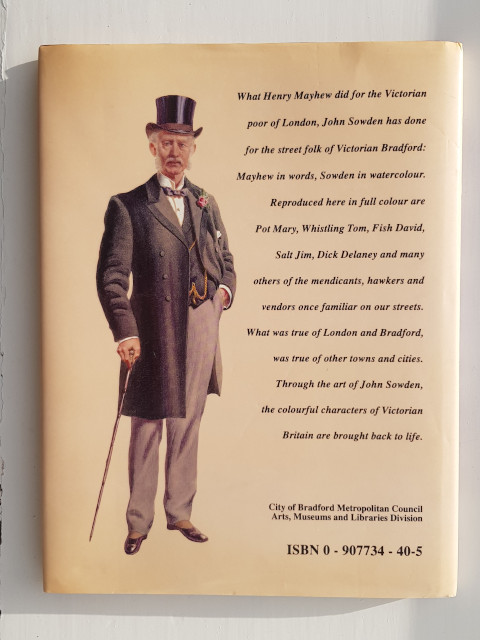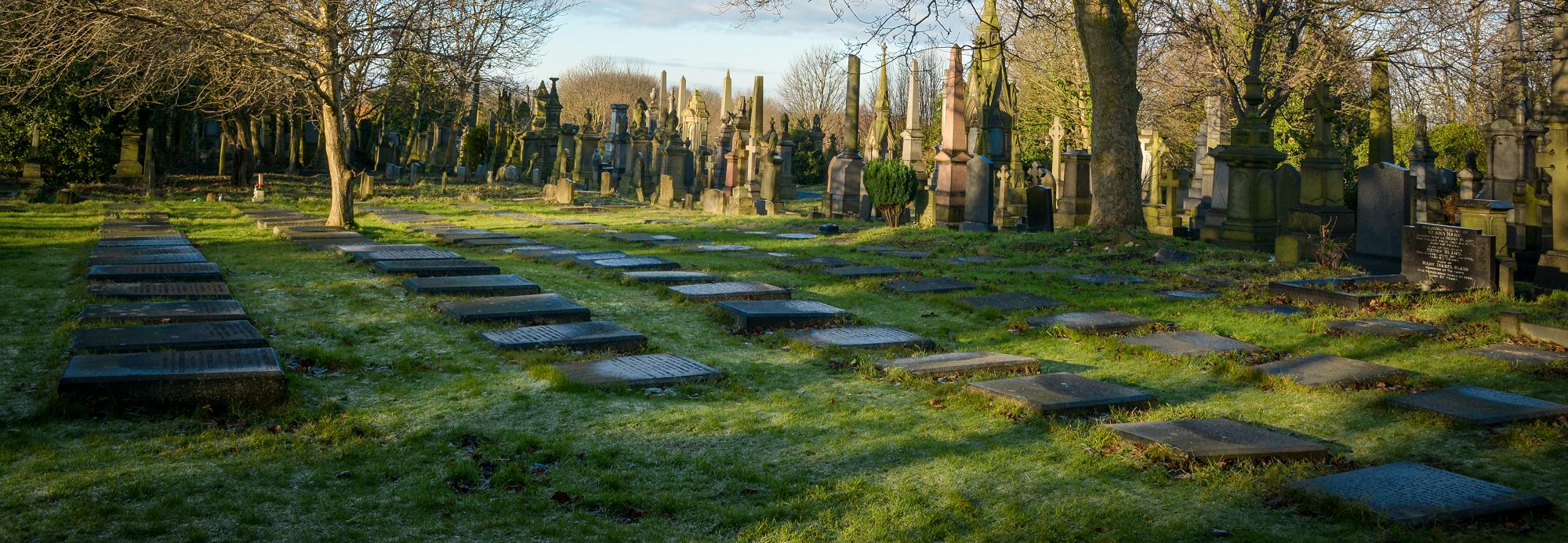John Sowden
John Sowden – Landscape and Portrait Artist, Tutor, and Property Developer.
John Sowden was first and foremost a talented artist. His skills and interest in art led to him to become the art master at the Bradford Mechanics Institute and later Headmaster. He was just 19 when he started his work there. He kept his position for over 40 years. When his father died, he inherited a property business and this got him involved in property development, the most notable being Bradford’s Swan Arcade which was said to be 50 years ahead of its time.
Mechanics Institute
John Sowden had studied art and drawing at the Mechanics Institute. In January 1859 he was appointed art master. Despite his young age when he started, he showed great promise and must have shown maturity beyond his age. The Bradford Observer 20th January 1859 announced the appointment. Mr Harris Chairman of the adjudicators of the Society of Arts ‘expressed himself in terms of the very highest eulogy upon the remarkable ability of Mr Sowden.’
Portraits of Worthies and Street Characters.
In the early 1860s he set up a studio in Stirling Street off Manchester Road and became a professional artist and landscape painter.
Whilst teaching his students at the mechanics institute he brought life models into the studio, sometimes off the streets, and maybe this was the start of his interest in capturing the image of some of the more unusual characters on the streets of Bradford. Amongst them were hawkers trying to make a living on the street, selling goods such as flowers, cockles, pens and pencils and celery. Also, there were street musicians, accordion players and fortune tellers. The streets would have been bustling with activity. Most locals going about their daily business would have just passed these people by, but Sowden must have looked at them from an artist’s point of view and seen them as interesting subjects to paint. At the same time, he was fascinated by them and wanted to know more about them. He kept diaries and made notes on each of them, and thus established a treasure trove historical information.
In the same way he picked out the street characters he also selected certain landscapes to paint, which again some people would have just glanced at and not thought anything of. An untrained eye might glance at a landscape without recognising its beauty, but an artist’s eye sees much more.
John had an interest in Liberal politics and frequently visited the Liberal club on a Saturday night to play billiards where he must have crossed paths with many important and influential people. He came from a comfortable background and was not purely driven by the desire or necessity to bring in money, and this gave him the opportunity to spend his time on things that were of personal interest.
He must have recognised at some point that he was in a position to make his own mark on history by capturing the portraits of some of Bradford’s Worthies. These were people who had made something of themselves and achieved great things in their lifetime. This came in various forms, men of industry, preachers, philanthropists, and those involved in politics who were driven by a desire to make things better for others. We have mixed feelings about politicians these days but in Victorian times many men who had been successful in business moved into local or national politics. Perhaps partly to influence the direction of things in their own town, for their own reasons, but also to improve the conditions of their workers, who quite frankly were having a hard time of it. Victorian society being what it was really didn’t give women a chance to rise to the top of industry or any other organisation. But there were a few exceptions, especially in the late Victorian era. People like the Brontes and Florence Nightingale who make their mark and will always be remembered for what they achieved, but these are rare examples.
And so, John Sowden set himself the task of painting the Bradford Worthies. In some cases, these might have been friends connected with the Mechanics Institute or Liberal club. Some people just didn’t want to be associated with, or have the time for Sowden, for one reason or another. It is said that John Sowden only painted portraits of people that he liked but this may only be partly true. He rejected certain characters who had a reputation or an undesirable background, but it is hardly likely that having painted over 350 portraits of street characters and worthies that he would have liked them all. He would have hardly known most of them. What he did find fascinating is their background and their story. As they sat usually for two sessions of two hours, he asked questions, and made notes, and recorded his observations in his diaries.
He would have been competing during the 1860s and afterwards against local photographers who could offer portraits at a much lower cost. Many artists switched to photography whist still offering painted portraits, large and small, but not Sowden he stuck to painting. Some photographers, such as Sarony, not a local man, even offered large sums of money to have the exclusive rights to take the portraits of certain celebrities. But what John Sowden was doing was different. He may have just seen his small portraits of the Worthy as a lead in to sell a more substantial portrait, or to get himself known as an accomplished artist so that he could sell his landscapes. But also, as he may have genuinely set out to capture the faces of the best known people of Bradford, for posterity, and thank goodness he did because many of the most successful and influential people of Bradford at the time would otherwise have been forgotten.

Some of the Street Characters of Bradford that Sowden painted are included in a book entitled Street Characters of a Victorian City. Most were hawkers who made a living at least for some of the year working the streets of Bradford. If Sowden saw a new character in the street he would often mention this in his diary, and if they met with his approval then he would offer to paint their portrait. Presumably by offering a small payment for their time. The book is still available to buy and Libraries also have a copy.
He set out on the task of painting the street characters and worthies in 1869. According to his diaries he didn’t paint them every year and had breaks to do other things, but he did tend to go back to his task and add to the collection. Eventually in 1821 he handed the whole collection to the Bradford City Museum along with notes on many of the worthies, it seems that the notes amounted to some 50,000 words. A small number of Sowden’s portraits are currently on display at Cartwright Hall but most are stored away for safe keeping and sadly out of view. But recently the museum decided to digitise them and make them available online.
What the diaries reveal
From around 1869 John Sowden kept diaries. Many of these are kept by the West Yorkshire Archives. The ones that are available are 1869-70, 1875, 1883, 1888, 1890-1893, 1895-1905, 1907-1910 and 1913-1916.
Although his hand writing is not easy to decipher his notes are very useful in getting to know what his daily life was like, and the notes he made on his sitters are precious in that they give us some insight into the daily life of others in Bradford, and record facts about his sitters that otherwise would not have been known.
His early diaries reveal that he taught people to paint by offering them private lessons. Later he was more involved in the Mechanics institute where he had a class of students.
Besides taking an interest in the street characters and worthies he took a great interest in painting landscapes and every year he would take trips across the country and sometimes abroad so that he could capture the view. Whitby and the East Coast were among his favourite places. He also enjoyed walking and visited local places such as Shipley Glen. Some of his paintings sold for significant sums. A painting of Whitby sold for £150 and another for £40, one of Shipley Glen for £40, one of Robin Hoods Bay 12 guineas, and so on. He held exhibitions to display his work at the Mechanics Institute and other places.
He was not afraid of stating his views. He would write to the press. In November 1904 he wrote to the Bradford Daily Telegraph raising concerns about the Councils proposals to put pathways through Shipley Glen.
“ Sir – I have heard from a trustworthy source that it is the intention of the Finance Committee of the City Council to recommend to the Parks Committee to make paths on either side of the stream at Shipley Glen Woods. I hope this recommendation will not be seriously considered by the full Council when it comes before them at their next meeting, for I feel sure that such gross vandalism will utterly ruin the charming Glen changing its natural beauty. “
John Sowden died in 1926 and is buried at Undercliffe Cemetery along with his wife Annie Bowes Russell and his parents William and Mary. His grave is on the main promenade, not far from the Behren’s monument.

